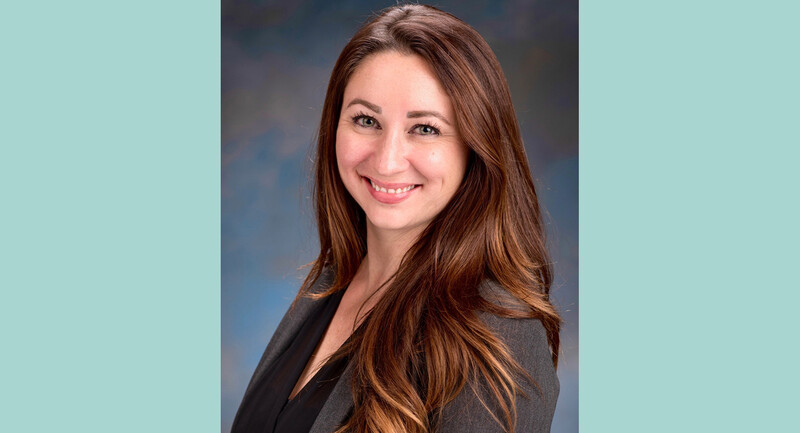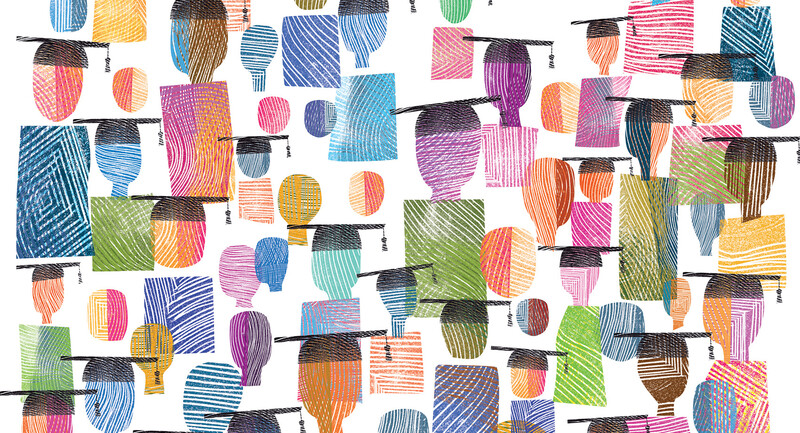"Children are the most marvelous material with which to work. There are characters to build, as well as knowledge to impart and minds to train, and there are even hearts to be educated."
So wrote Eleanor Roosevelt—yes, the Eleanor Roosevelt—in the very first issue of Educational Leadership in October 1943. The impressively debuting magazine was the official publication of an ambitious new organization then known as the Department of Supervision and Curriculum Development. The group had launched just seven months earlier, in March 1943, through the merger of two organizations—the Society for Curriculum Study and the Department of Supervisors and Directors of Instruction (part of the National Education Association)—whose members were looking to break through rigid hierarchies and hidebound conventions in education and work toward holistic approaches to school improvement.
From the start, the ASCD, as the organization soon came to be known, embraced a unique and compelling set of core principles. It focused not just on the academic goals of curriculum, but also on education's broader social dimensions, including the development of students' moral and creative capacities and an understanding of their diverse needs. It called for greater collaboration and cross-pollination between district leaders, school principals, and teachers (a priority soon reflected in its membership). And it sought to provide a trustworthy and independent forum for educator voice, support, and idea sharing, including on controversial and challenging issues.
During its first 75 years, ASCD has carried out and built on those principles in ways that even its forward-thinking founders might not have imagined. Through its publications, books, conferences, advocacy work, digital resources, professional development services, and—perhaps most of all—its membership, the organization has fostered a robust and ceaselessly questioning community of professional learners.
Join us as we look back on some of the highlights of ASCD's first 75 years and look ahead to the work still to be done.
"It's hard to convey today how important ASCD was to those of us who came early to the association. ASCD was the focus of our efforts to create a better education in a better society."—William Van Til, ASCD President, 1961–62
Educational Leadership Through The Decades
Teaching in War Time (October 1943)
- Creativity and the School (October 1956)
- Unlocking the School (May 1967)
- Controversy and Education (October 1975)
- Empowering Students and Teachers Through Technology (March 1986)
- How the Brain Learns (November 1998)
- NCLB: Taking Stock, Looking Forward (November 2006)
- Disrupting Inequity (November 2016)
Prominent Voices
Eleanor Roosevelt (October 1943)
Hubert Humphrey (March 1951)
Hillary Clinton (March 1992)
Maya Angelou September 2013
Sir Ken Robinson September 2009
ASCD Books: Thought Leadership, Covered
Since 1943, ASCD has published more than 750 titles. It now places more than 1 million books in the hands of educators every year. ASCD books have been published in more than 50 countries and 30 languages.
All-Time ASCD Bestsellers
Perceiving, Behaving, Becoming: A New Focus for Education (1962) by Arthur Wright Combs and Earl C. Kelley
Classroom Instruction That Works (2001, 2012) by Robert J. Marzano, Debra J. Pickering, and Jane E. Pollock (1st edition); Ceri B. Dean, Elizabeth Ross Hubbell, Howard Pitler, and Bj Stone (2nd edition)
Enhancing Professional Practice (1996, 2007) by Charlotte Danielson
How to Differentiate Instruction in Academically Diverse Classrooms (1995, 2001, 2017) by Carol Ann Tomlinson
The Differentiated Classroom (1999, 2014) by Carol Ann Tomlinson
Understanding by Design (2005) by Grant Wiggins and Jay McTighe
1946
ASCD holds its first annual conference in St. Louis, Missouri, with the theme "Setting Our Instructional Sights."
1949
In response to "educational McCarthyism," ASCD adopts a resolution condemning censorship in schools and promoting instructional freedom.
1962
ASCD's 1962 yearbook, Perceiving, Behaving, Becoming, spurs popularity of the humanist movement.
1971
Alvin Loving becomes ASCD's first African American president.
1970
ASCD sponsors the first meeting of the World Council of Curriculum and Instruction in Pacific Grove, California, with educators from 70 countries in attendance.
1983
ASCD charters its first international affiliate in Germany and adopts its first formal five-year plan, which includes an expansion of its international influence.
1981
ASCD passes the first of several resolutions opposing private school vouchers, expressing concern that they could lead to racial, economic, and social isolation and weaken public schools.
1943
ASCD is created through a merger of NEA's Department of Supervisors and Directors of Instruction and the Society for Curriculum Study. The first issue of Educational Leadership magazine is published.
1959
ASCD passes the first of several resolutions recognizing the value of equity and cultural diversity as goals of education and advocating for a multicultural curriculum.
1955
In response to Brown v. Board of Education, ASCD passes its first major civil rights resolution, calling for all public schools to be "open and free to the children of all people."
1956
ASCD adopts a progressive platform stating that "the main purpose of American schools is to provide for the fullest possible development of each learner."
1985
ASCD declares "Year of the Teacher"; Congress passes supporting resolutions.
1972
ASCD becomes independent from the NEA and endorses the Equal Rights Amendment.
1973
Gordon Cawelti becomes the executive director of ASCD (serving until 1992).
1977
ASCD releases its first professional development video, Designing a Middle School for Early Adolescents.
1996
ASCD launches its website and issues "Religious Liberty, Public Education, and the Future of American Democracy: A Statement of Principles."
1993
ASCD adopts a new mission statement characterizing the association as a global entity and force "for the success of all learners."
1992
Gene R. Carter becomes the executive director of ASCD (serving until 2014).
2015
Deborah S. Delisle becomes ASCD's chief executive officer and executive director. ASCD becomes the lead partner in the U.S. Department of Education's Teach to Lead program.
2007
ASCD launches the Whole Child Initiative.
1997
ASCD launches PD Online® to provide interactive, in-depth, and self-paced professional development courses to educators.
2017
ASCD launches ASCD Streaming, an on-demand video platform, Whole Child for the Whole World, and the ASCD Activate Professional Learning Network.
Power of Membership
From its start, ASCD has been unique among education organizations because of its service to educators across the professional spectrum, from teachers to superintendents. Today, ASCD resources can be found in more than 38,000 U.S. public schools, and ASCD members and materials influence more than 18 million students.
A Growing Member Base
1,000 members
ASCD in 1943
70,000 members
ASCD in mid-1980s
115,000 members
ASCD in 2018
Longest-Tenured Member
Milly Cowles of Fairhope, Alabama. An ASCD member since 1969, Cowles taught in Montgomery in the 1950s and subsequently became a professor of education, publishing research on the psycholinguistic behaviors of rural children.
Educated Educators
68 percent of ASCD members have a master's degree, and 26 percent have a doctorate degree.
Global Reach OF Members
ASCD has members in more than 128 countries. Among its 51 affiliates are organizations in countries such as Pakistan, Singapore, and Kenya.
By the Numbers
92,208,942 total impressions on ASCD social media platforms in 2017
13 classes of ASCD Emerging Leaders (a total of 372 educators) since 2005
14 Teach to Lead summits across the United States since 2014
The Conference for Every Educator
For decades, ASCD's annual conference has brought together thousands of educators from across the world to learn, network, and find inspiration.
First Meeting ASCD's first annual conference was held in St. Louis, Missouri, in March 1946. The theme was "Setting Our Instructional Sights." The conference was free for members and a whopping $1 for nonmembers.
"Unconference" Originator Early ASCD conferences started out with a "Presentation of Problems" session in which experienced educators would describe discussion group topics so that attendees could select which topic most appealed to them before beginning a three-day exploration of their chosen topic.
Sign of the Times The 1970 conference in San Francisco was the first to host a radical caucus of ASCD members. The caucus disbanded a few years later.
"Demonstrations in Technology" Showcases These sessions wowed 1980s attendees with new devices for different education situations, offering tips on integrating technology into curriculum planning and instruction.
Empowered In 2016, the annual conference officially became known as ASCD Empower and was redesigned to feature innovative learning formats (like Edcamps and learning labs) to allow for more personalized learning experiences.
Memorable Presenters
San Francisco, 1978
Chicago, 1978
New Orleans, 2004
Los Angeles, 2014
New York City, 1984
San Antonio, 1998
Chicago, 2013
Houston, 2015
Conference with the Highest Attendance
The Boston annual conference in 2001, with the theme "Reaching for Balance: Resolving Educational Dilemmas," had a record-breaking 15,000 registered attendees.
Advocating for the Whole Child
From condemning censorship in schools in the 1940s, to supporting civil rights and equity in the 1950s and 1960s and protecting the integrity of public schools in the 1980s, ASCD has been a leading voice on key issues in education and society throughout its history.
In 2007, ASCD launched its Whole Child Initiative, spurred by this question from then–Executive Director Gene Carter:
If decisions about education policy and practice started by asking what works for the child, how would resources—time, space, and human—be arrayed to ensure each child's success? If the student were truly at the center of the system, what could we achieve?
Based initially on Abraham Maslow's Hierarchy of Needs, the ASCD Whole Child approach to education aims to ensure that each child, in each school, in each community is healthy, safe, engaged, supported, and challenged.
Whole Child Milestones
Arkansas becomes the first state to pass a legislative resolution based on ASCD's Whole Child tenets. Four additional states have passed whole child resolutions since.
The first Vision in Action: The ASCD Whole Child Award is presented to Malcolm Price Lab School in Cedar Falls, Iowa.
The ASCD School Improvement Tool launches, giving educators the ability to conduct a whole child needs assessment for their schools.
The Whole School, Whole Community, Whole Child model launches as a partnership between ASCD and the U.S. Centers for Disease Control and Prevention.
The Whole Child for the Whole World launches, focusing on expanding the whole child approach globally.
Looking Ahead: The Next 75 Years
Although the future of education can be difficult to predict, ASCD is committed to serving the changing needs of educators and students and advocating for the importance of a whole child education.
Programs such as the ASCD Activate Professional Learning Network, ASCD Professional Learning Services, PD Online®, PD In Focus®, ASCD myTeachSource®, and ASCD Streaming speak to the organization's promise to deliver vital content in innovative, flexible ways to today's educators.
With initiatives like the ASCD Emerging Leaders program, Teach to Lead, the ASCD Student Growth Center, and the Whole Child for the Whole World program, ASCD is cultivating the education leaders of tomorrow and broadening its advocacy efforts to promote awareness of and support for the comprehensive needs of students.
Three Myths That Block Positive Educational Change
The good old days are still good enough.
We're better off if we all think alike—and not too much.
Too much creativity is dangerous—and the arts are frills.
—Heidi Hayes Jacobs, Curriculum 21: Essential Education for a Changing World (2010)
Did You Know?
For more than 70 years, ASCD has provided customized on-site professional learning expertise led by its faculty of experts.








